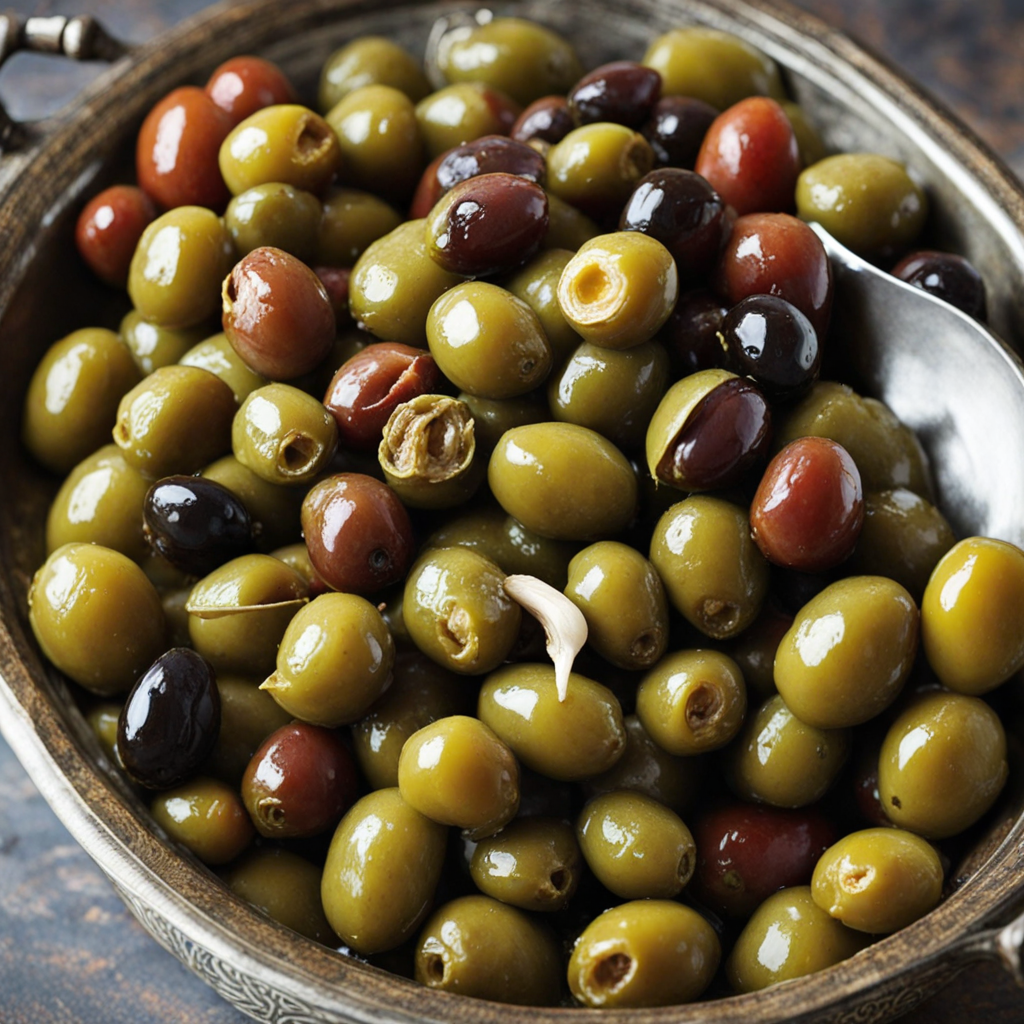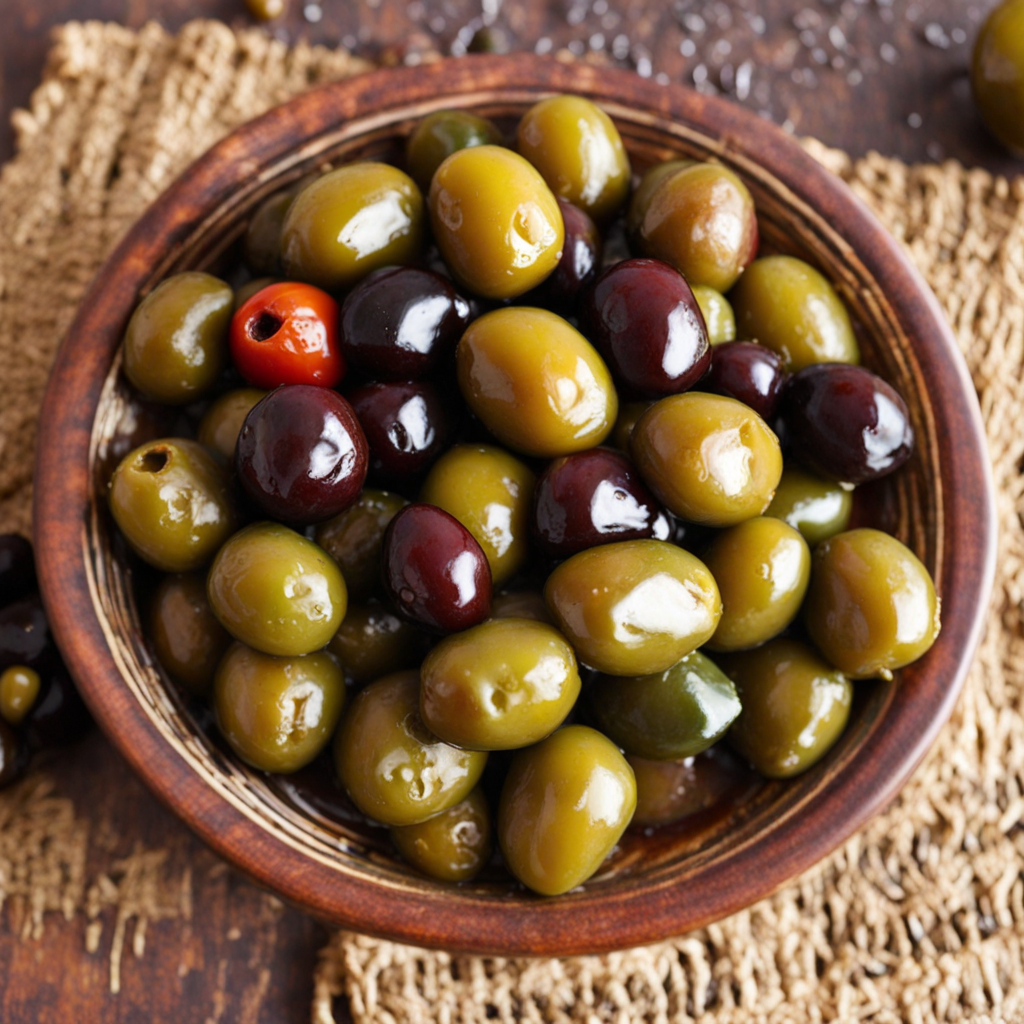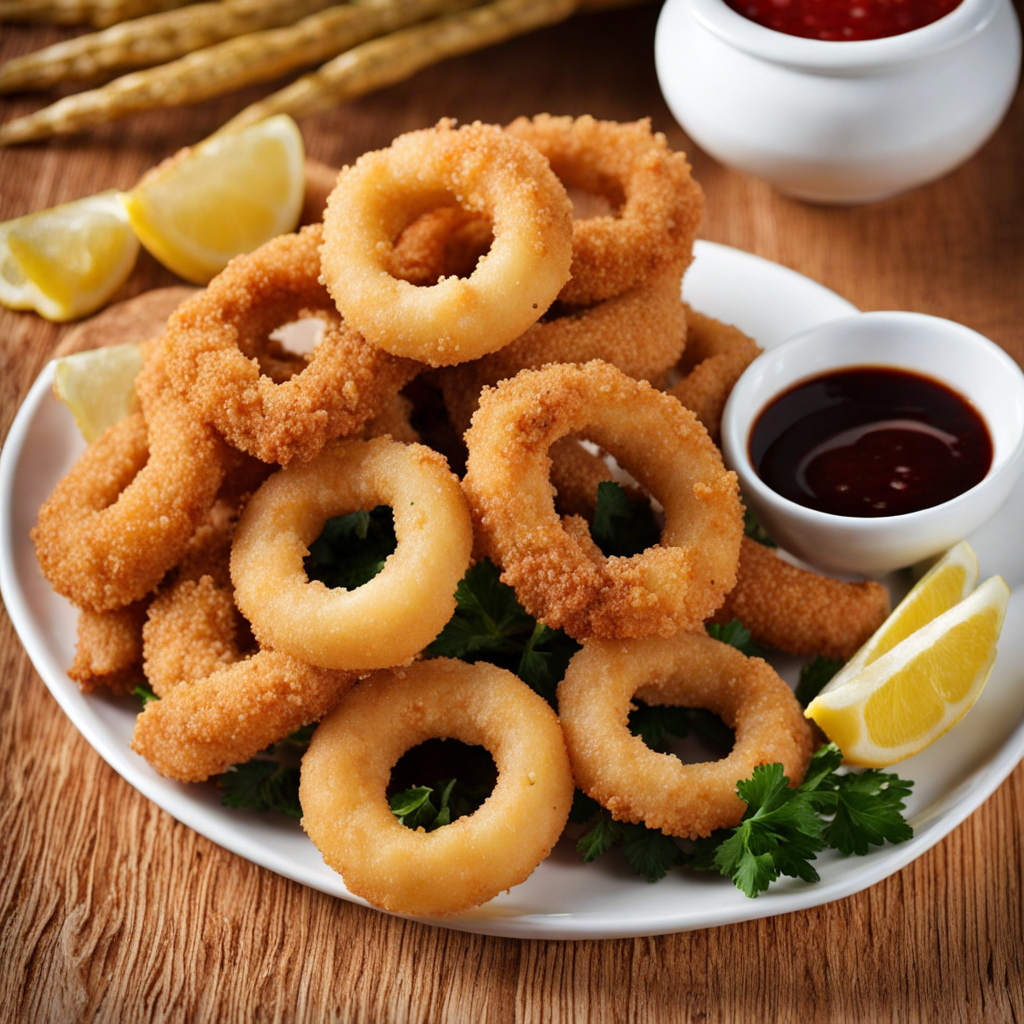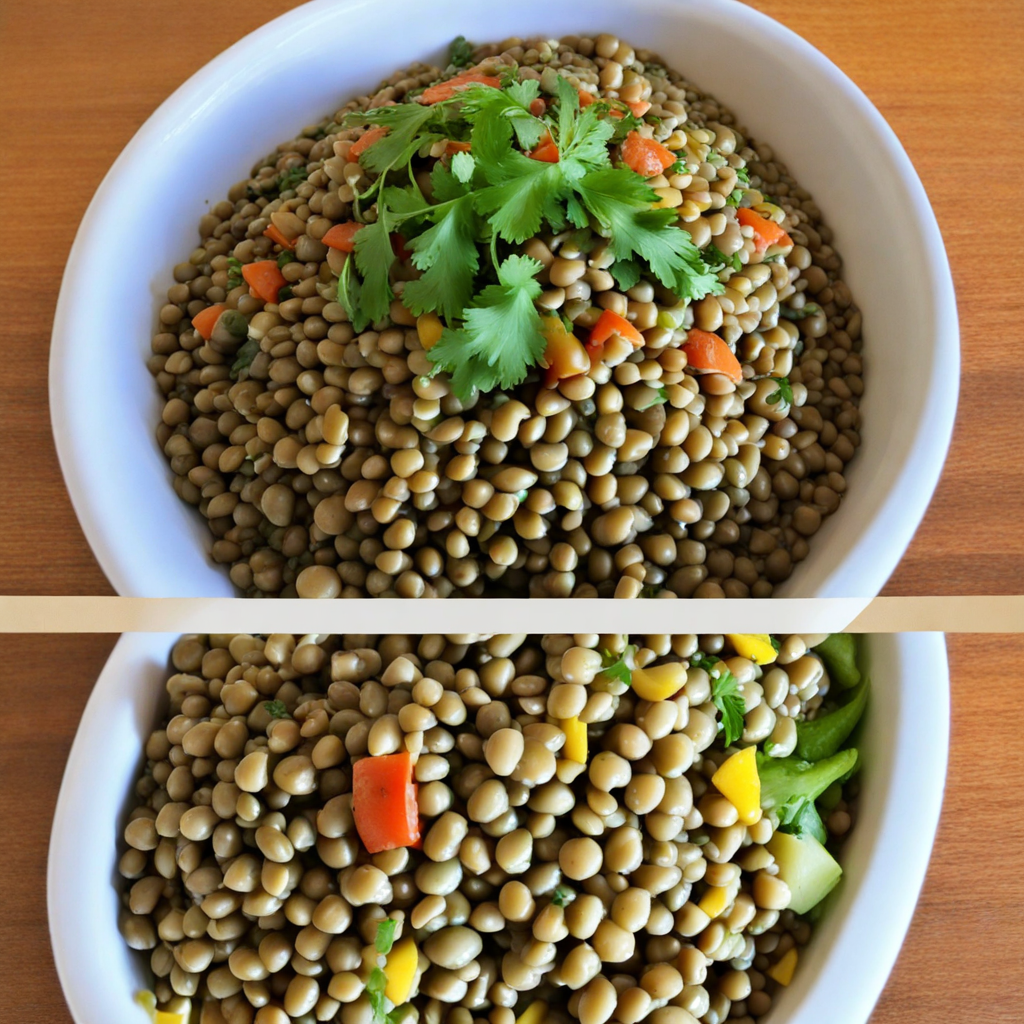Spiced Olives
Spiced olives are a delightful Moroccan delicacy that encapsulates the vibrant and rich culinary heritage of the region. These olives are typically brined and then marinated in a medley of spices, including cumin, coriander, and sometimes a touch of chili for a hint of heat. The process not only enhances the natural briny flavor of the olives but also infuses them with aromatic spices that create a symphony of taste and fragrance. The olives themselves can range from green to black, each offering a unique flavor profile that complements the spices beautifully. The preparation of spiced olives often includes the addition of citrus elements, such as preserved lemons or orange zest, which add a zesty brightness to the dish. Fresh herbs like parsley or cilantro are also commonly incorporated, providing a fresh contrast to the earthiness of the spices. The combination of these ingredients results in a dish that is both complex and refreshing, making it a perfect accompaniment to a traditional Moroccan meal or as a standalone snack. The olives are typically served at room temperature, allowing their rich flavors to shine. Spiced olives are not just a treat for the palate; they are also visually appealing, often arranged in vibrant colors that reflect the beauty of Morocco's landscapes. Enjoying these olives can transport you to a bustling Moroccan market, where the air is filled with the scent of spices and the warmth of the sun. Whether enjoyed with crusty bread, alongside a charcuterie board, or simply as a flavorful appetizer, spiced olives are an unforgettable culinary experience that invites you to explore the heart of Moroccan cuisine.
How It Became This Dish
The Engaging History of زيتون متبل (Zaitoun Mtabbal) from Morocco The rich tapestry of Moroccan cuisine is a testament to the country's diverse cultural influences and agricultural abundance. Among the many culinary treasures that have emerged from this North African nation, زيتون متبل (Zaitoun Mtabbal), or spiced olives, holds a special place. This dish, combining the earthy flavor of olives with a vibrant array of spices, not only reflects the agricultural heritage of Morocco but also conveys the deep cultural significance of communal sharing and hospitality that permeates Moroccan life. Origins The olive tree (Olea europaea) has ancient roots in the Mediterranean region, and its cultivation dates back thousands of years. While the exact origins of the olive tree are still debated, it is widely believed to have been domesticated in the Eastern Mediterranean before spreading to North Africa, including Morocco. The country’s climate, characterized by hot, dry summers and mild, wet winters, provides an ideal environment for olive cultivation. Archaeological evidence suggests that olives were being cultivated in Morocco as early as 3000 BCE. The Phoenicians, who established trade routes along the coast, are often credited with introducing the olive tree to Morocco, enhancing local agricultural practices. By the time the Romans arrived, they recognized the potential of the olive, promoting its cultivation and integrating it into the local economy. Olive groves flourished throughout the region, leading to an abundance of olives that became a staple of the Moroccan diet. Cultural Significance In Moroccan culture, olives are more than just a culinary ingredient; they are a symbol of hospitality, communal living, and tradition. The act of serving زيتون متبل is deeply intertwined with Moroccan customs of sharing food, whether at family gatherings, festive occasions, or everyday meals. It is common to see spiced olives served as a starter during meals, embodying the concept of "mechoui"—the idea of sharing and enjoying food together. The preparation and consumption of زيتون متبل also reflect the seasonal rhythms of Moroccan life. Olives are harvested in the fall, and the preservation process begins shortly after. This practice not only ensures a supply of olives throughout the year but also signifies the importance of seasonal eating in Moroccan culture. Olives are often marinated with a variety of spices, including cumin, paprika, and garlic, showcasing the regional availability of these ingredients and the Moroccan flair for bold flavors. Development Over Time The evolution of زيتون متبل can be traced through Morocco’s historical interactions with various cultures and peoples. The Berbers, the indigenous people of North Africa, have long incorporated olives into their diet and culinary practices. They developed traditional methods of preserving olives, which included fermentation and curing with salt and spices, techniques that have been passed down through generations. As Morocco became a crossroads for different civilizations, such as the Arabs, Jews, and Europeans, the recipe for زيتون متبل began to evolve. The arrival of the Arab influence in the 7th century brought with it new spices and culinary techniques that enriched Moroccan cuisine. The use of harissa—a spicy paste made from chili peppers, garlic, and spices—began to influence how olives were prepared. The introduction of citrus fruits, like lemons and oranges, also found their way into olive preparations, adding a bright note to the flavor profile. During the time of the Almoravid and Almohad dynasties in the 11th to 13th centuries, Moroccan cuisine saw significant refinement. The royal courts embraced extravagant feasting, and dishes like زيتون متبل became part of the elaborate spreads that showcased the culinary artistry of the time. The use of high-quality olive oil, often pressed from local varieties, became a hallmark of Moroccan cooking, elevating the humble olive to a symbol of luxury. In the modern era, globalization and the rise of culinary tourism have further transformed زيتون متبل. As international interest in Moroccan cuisine has grown, chefs and home cooks alike have begun to experiment with traditional recipes, introducing innovative twists while respecting the essence of the dish. Contemporary versions may include a wider variety of spices or even fusion elements inspired by other Mediterranean cuisines. The Ingredients At its core, زيتون متبل is a harmonious blend of olives and spices. The choice of olives—whether green or black—depends on regional preferences and availability. Moroccan olives, such as the "Picholine" or "Sigoise," are particularly prized for their unique flavors. After harvesting, olives can be cured in brine, water, or with salt, depending on the desired taste and texture. The spices used in زيتون متبل play a crucial role in defining its flavor. Cumin, with its warm, earthy profile, is a staple in many Moroccan dishes. Paprika adds a gentle smokiness, while garlic infuses the dish with depth. The addition of preserved lemon—a quintessential Moroccan ingredient—provides a bright, tangy contrast that elevates the olives’ natural flavors. Today’s Culinary Scene In contemporary Morocco, زيتون متبل continues to be a beloved dish, often served in homes and restaurants alike. It is a staple on the traditional Moroccan mezze platter, which may include other delights such as zaalouk (eggplant salad) and various breads. The dish has also found its place in international cuisine, with Moroccan restaurants around the world serving it as an appetizer. As food culture continues to evolve, زيتون متبل remains a testament to Morocco's rich history and vibrant culinary landscape. It serves as a reminder of the importance of community, tradition, and the joy of sharing food with loved ones. Its enduring popularity speaks to the ways in which food can transcend time and place, connecting us to our roots while allowing for exploration and creativity. Conclusion From its ancient origins in the verdant olive groves of Morocco to its contemporary status as a cherished dish, زيتون متبل encapsulates the essence of Moroccan cuisine. It reflects the deep cultural connections that bind people together through food, celebrating the flavors, traditions, and stories that have shaped Moroccan identity over centuries. In every bite, one can taste not only the spices and olives but also the rich history and the warmth of Moroccan hospitality that continues to thrive today.
You may like
Discover local flavors from Morocco







